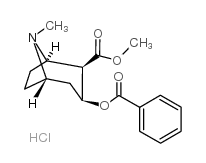| Structure | Name/CAS No. | Articles |
|---|---|---|
 |
Dopamine hydrochloride
CAS:62-31-7 |
|
 |
Cocaine
CAS:50-36-2 |
|
 |
cocaine Hcl
CAS:53-21-4 |
|
 |
Corticotropin Releasing Factor (148-188), ovine
CAS:9015-71-8 |
|
 |
Astressin TFA
CAS:170809-51-5 |